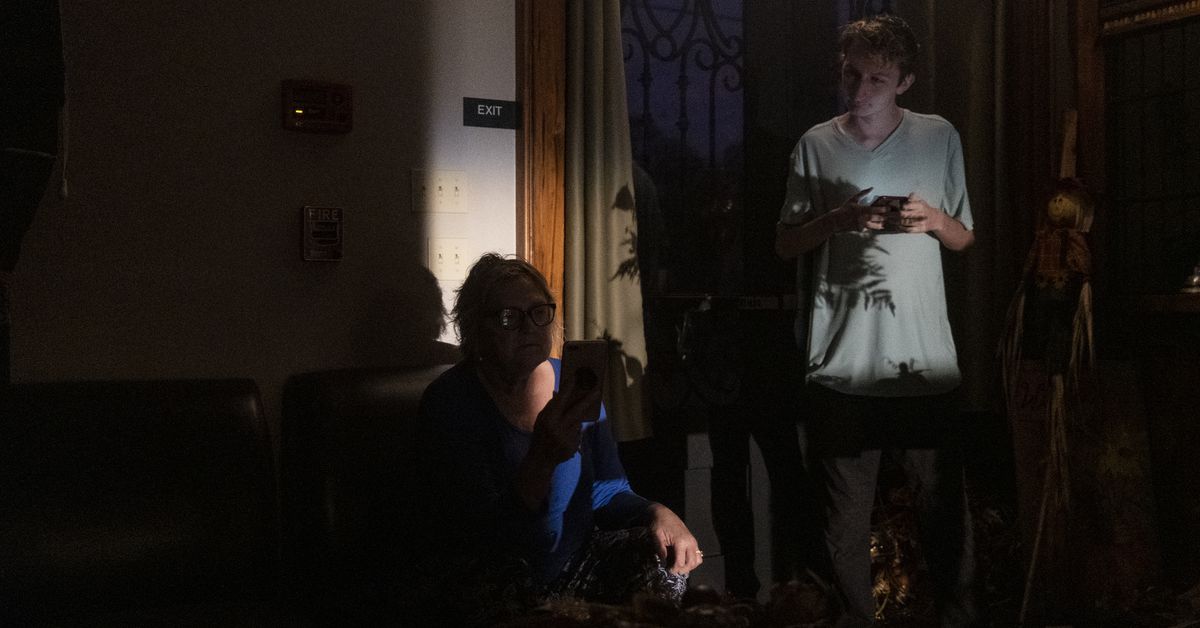2020 was the worst year yet for power outages in the US
The problem could get worse unless the power grid gets a major makeoverBy Justine Calma
Nov 10, 2021, 1:06pm EST
2020 was a record-breaking year for power outages in the United States, according to an Energy Information Administration (EIA) analysis published today. Extreme weather is leaving Americans in the dark for longer than it has in the past, a problem that is bound to get worse as climate change fuels even more violent weather.
On average, a person in the US went over eight hours without electricity in 2020. That’s more than twice as long the average American went without power in 2013, the year that the EIA started keeping track. Across the US, outage times varied considerably. Residents of Louisiana, the state with the longest outages, went a full 60 hours, on average, without electricity last year.
Major weather events are primarily to blame. 2020 was the most active Atlantic hurricane season ever documented, and five hurricanes dealt repeated blows to Louisiana’s grid. Tropical Storm Isaias knocked out power for about 750,000 customers in Connecticut, another state that suffered way longer outages than the national average. In addition to cyclones, an ice storm wiped out electricity for 300,000 customers in Oklahoma in October 2020. A derecho in Iowa — the costliest thunderstorm in US history — damaged a nuclear power plant so badly that it had to be retired early.
Without these extreme events, outages caused by small snags (like pesky wildlife and tree-trimming gone wrong) would have stayed roughly flat at about two hours a year since 2013.
While 2021 isn’t over, this year has already been bad when it comes to power outages. Around 1.2 million customers lost power across eight states in August and September because of Hurricane Ida. So did more than 4.5 million customers during a sudden cold snap in Texas in February. Lives were lost, too, as residents dealt with weather extremes without air conditioning, heat, or life-saving medical devices.
To keep the lights on in a warming world, America’s aging grid, much of which was built in the middle of the 20th century, needs a serious overhaul. The bipartisan infrastructure bill just passed by Congress includes $65 billion to fix up the power grid, including a big investment in new transmission lines to zip renewable energy from far-flung wind and solar farms to homes across the country. Those lines also need to be hardened to withstand storms and fires supercharged by climate change. When Hurricane Ida tore through Louisiana, for example, it knocked out all eight transmission lines that bring electricity into New Orleans — leaving residents in the dark for more than a week.
More money could soon flow towards transforming the US energy system if the $1.75 trillion budget reconciliation bill makes it through a final round of congressional wrangling.
Renewable energy — particularly solar panels paired with batteries and microgrids — has the potential to make the grid more resilient when disaster does strike. Home solar systems and even electric vehicles can step in to provide backup power during blackouts, for example. Microgrids are one solution that cities like New Orleans have already looked into.
Nationwide, President Biden has a goal of getting to a 100-percent clean energy power sector by 2035. Meeting that target and larger emissions goals could also keep dangerous weather events from growing even more extreme.

2020 was the worst year yet for power outages in the US
The electricity grid needs a major overhaul.

